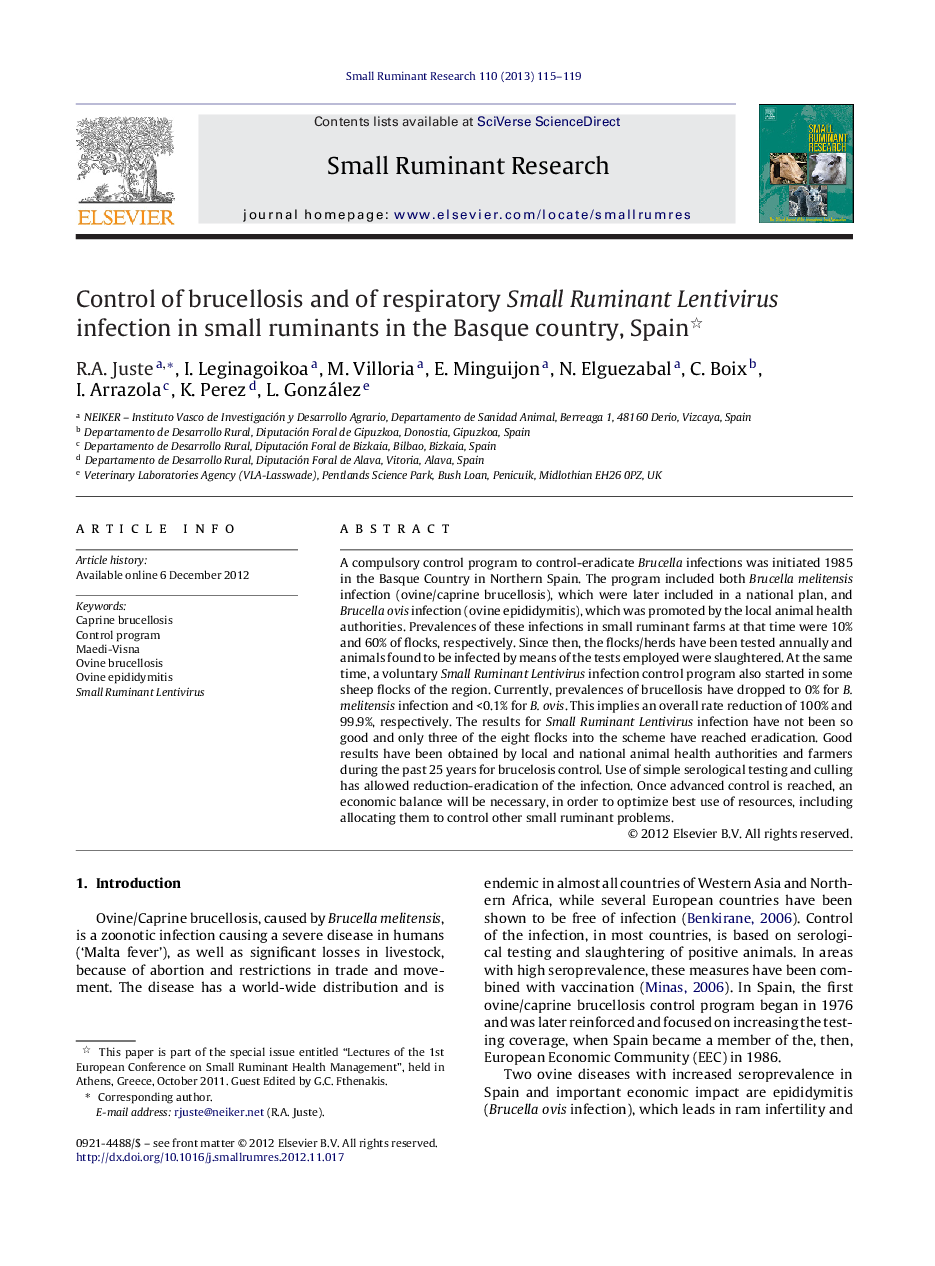| Article ID | Journal | Published Year | Pages | File Type |
|---|---|---|---|---|
| 2457128 | Small Ruminant Research | 2013 | 5 Pages |
A compulsory control program to control-eradicate Brucella infections was initiated 1985 in the Basque Country in Northern Spain. The program included both Brucella melitensis infection (ovine/caprine brucellosis), which were later included in a national plan, and Brucella ovis infection (ovine epididymitis), which was promoted by the local animal health authorities. Prevalences of these infections in small ruminant farms at that time were 10% and 60% of flocks, respectively. Since then, the flocks/herds have been tested annually and animals found to be infected by means of the tests employed were slaughtered. At the same time, a voluntary Small Ruminant Lentivirus infection control program also started in some sheep flocks of the region. Currently, prevalences of brucellosis have dropped to 0% for B. melitensis infection and <0.1% for B. ovis. This implies an overall rate reduction of 100% and 99.9%, respectively. The results for Small Ruminant Lentivirus infection have not been so good and only three of the eight flocks into the scheme have reached eradication. Good results have been obtained by local and national animal health authorities and farmers during the past 25 years for brucelosis control. Use of simple serological testing and culling has allowed reduction-eradication of the infection. Once advanced control is reached, an economic balance will be necessary, in order to optimize best use of resources, including allocating them to control other small ruminant problems.
